Recently released James Webb Space Telescope images of 19 distant galaxies shine an entirely new, dynamic and vibrant light on these gorgeous realms. The treasure trove of cosmic portraits taken by this $10 billion telescope reveals highly detailed, and quite breathtaking, face-on views of the spirals as seen from the instrument’s vantage point in space.
These JWST images had particularly excited astronomers while in the process of being delivered because they emphasized that no two galaxies are the same when viewed with the kind of precision the JWST can offer.
The observations, part of the Physics at High Angular resolution in Nearby Galaxies (PHANGS) program, especially highlight structures of gas and dust within these galaxies, offering astronomers hints at how spiral galaxies like the Milky Way form stars.
“The JWST’s new images are extraordinary,” Janice Lee, project scientist for strategic initiatives at the Space Telescope Science Institute in Baltimore, said in a statement. “They’re mind-blowing even for researchers who have studied these same galaxies for decades. Bubbles and filaments are resolved down to the smallest scales ever observed and tell a story about the star formation cycle.”
Related: Nearby star factory shines in stunning James Webb Space Telescope photo
The images show glowing orange lanes of dust, captured with the JWST’s Mid-Infrared Instrument (MIRI).
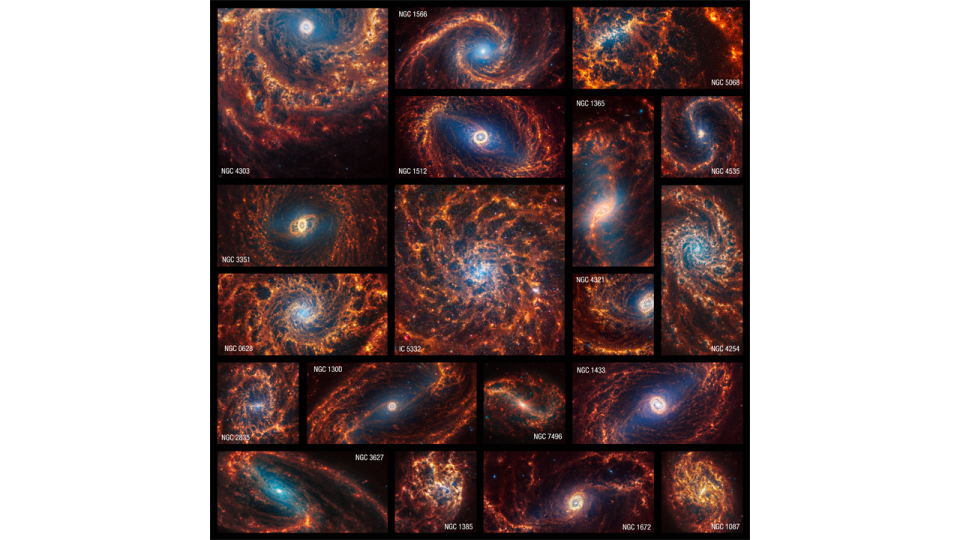
The same instrument also captured stars that are still in the process of forming, encased in envelopes of gas and dust from which they are gathering mass. Those envelopes can be seen as red “seeds” on the peaks of dust lanes.
“These are where we can find the newest, most massive stars in the galaxies,” Erik Rosolowsky, a professor of physics at the University of Alberta, said in the statement.
This aspect of the newly imaged spiral galaxies is particularly prominent in the image of barred spiral galaxy NGC 1300, located 69 million light-years away in the constellation Eridanus.
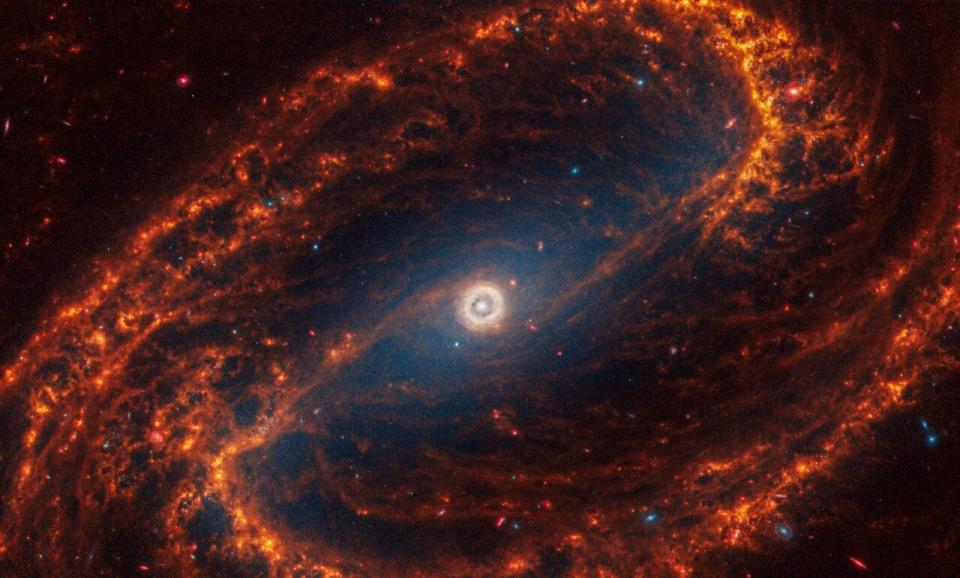

Millions of more mature stars are seen in the images as bright blue jewels shining through orange lanes of gas and dust, captured by the JWST’s Near-Infrared Camera (NIRCam). Some of these blue stars are clustered together, while others are spread out through their home galaxies.
These hot blue stars can be seen clearly in the JWST PHANGS image of the spiral galaxy NGC 7496, which is 24 million light-years away from Earth in the constellation Grus.
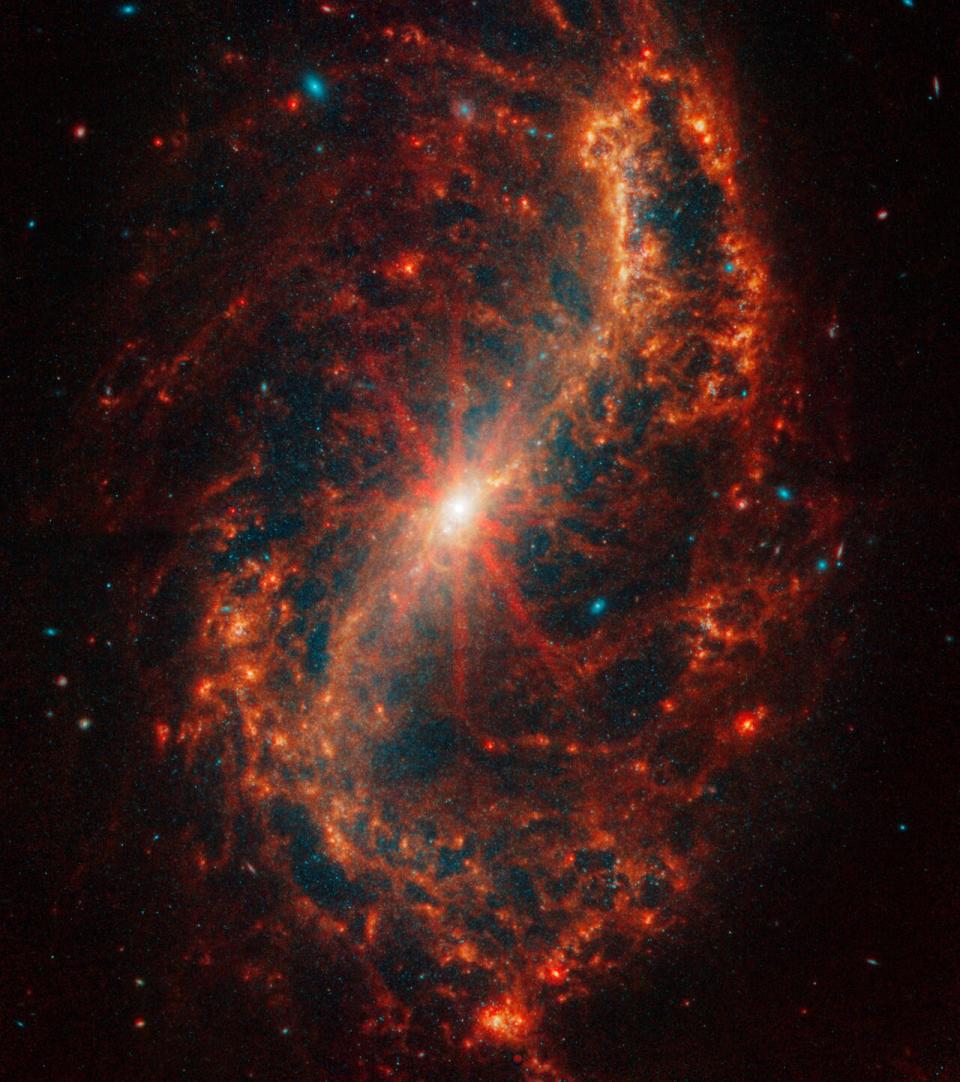

To the amazement of the astronomers who examined these JWST-imaged spiral galaxies, the powerful space telescope also spotted several voids within gas and dust lanes.
“These holes may have been created by one or more stars that exploded, carving out giant holes in the interstellar material,” Adam Leroy, a professor of astronomy at Ohio State University, said in the statement.
One of the galaxies imaged by the JWST as part of the PHANGS program, NGC 5068, which is located 20 million light-years from Earth in the constellation Virgo, appears to be dominated by such large voids.
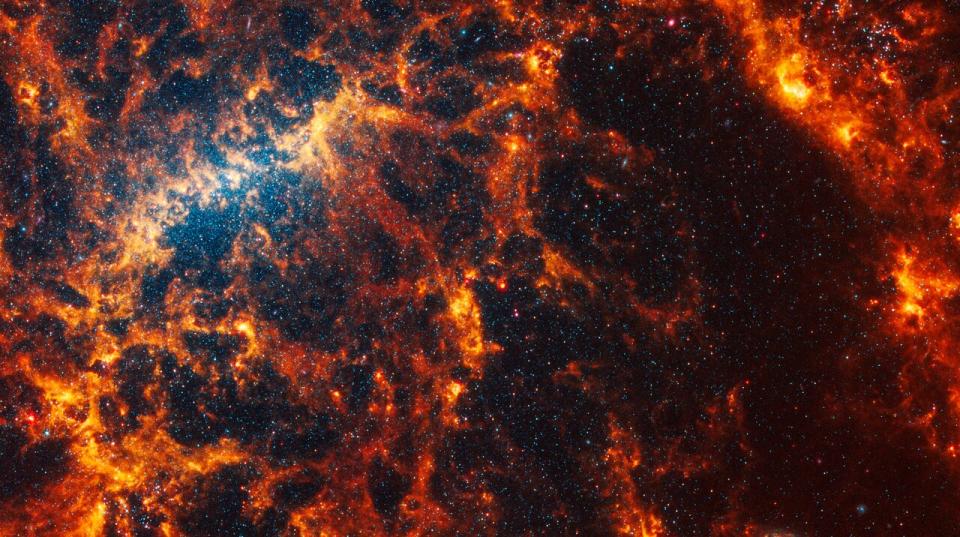

Of course, one of the most stunning features of any spiral galaxy concerns the “arms” that radiate out from the central nucleus of densely packed stars to form an iconic spiral. By tracing these arms, astronomers can find extended regions of glowing gas and dust.
“These structures tend to follow the same pattern in certain parts of the galaxies,” Rosolowsky explained. “We think of these like waves, and their spacing tells us a lot about how a galaxy distributes its gas and dust.”
Because dense clouds of gas and dust collapse to form new stars, studying these structures in detail could provide key information about how intense bursts of star formation are triggered, maintained, then shut down in galaxies.
These spiral arms have arguably never appeared more dynamic and vibrant than they do in the new JWST image of NGC 628, a spiral galaxy located 32 million light-years away in the constellation Pisces. In the image, the galaxy’s arms appear to be spritzing gas and dust like bright orange splashes of spray paint.
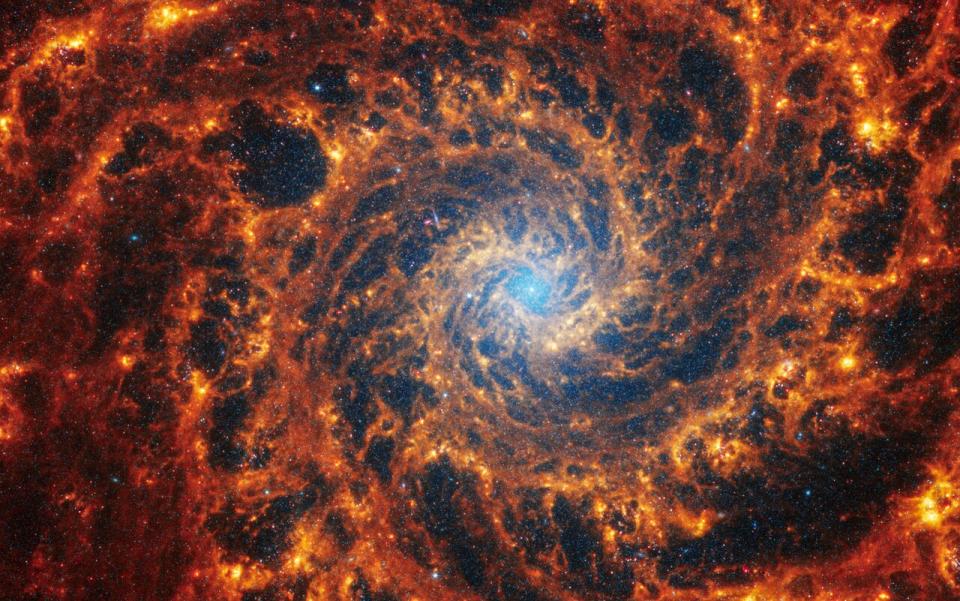

Additionally, some of the galaxies seen by the JWST as part of this observing program show pink-and-red diffraction spikes spread throughout their central region.
“That’s a clear sign that there may be an active supermassive black hole,” Eva Schinnerer, a scientist with the Max Planck Institute for Astronomy, said in the statement. “Or, the star clusters toward the center are so bright that they have saturated that area of the image.”
This can be seen in the JWST image of NGC 1365, which is located 56 million light-years away from Earth in the constellation Fornax.
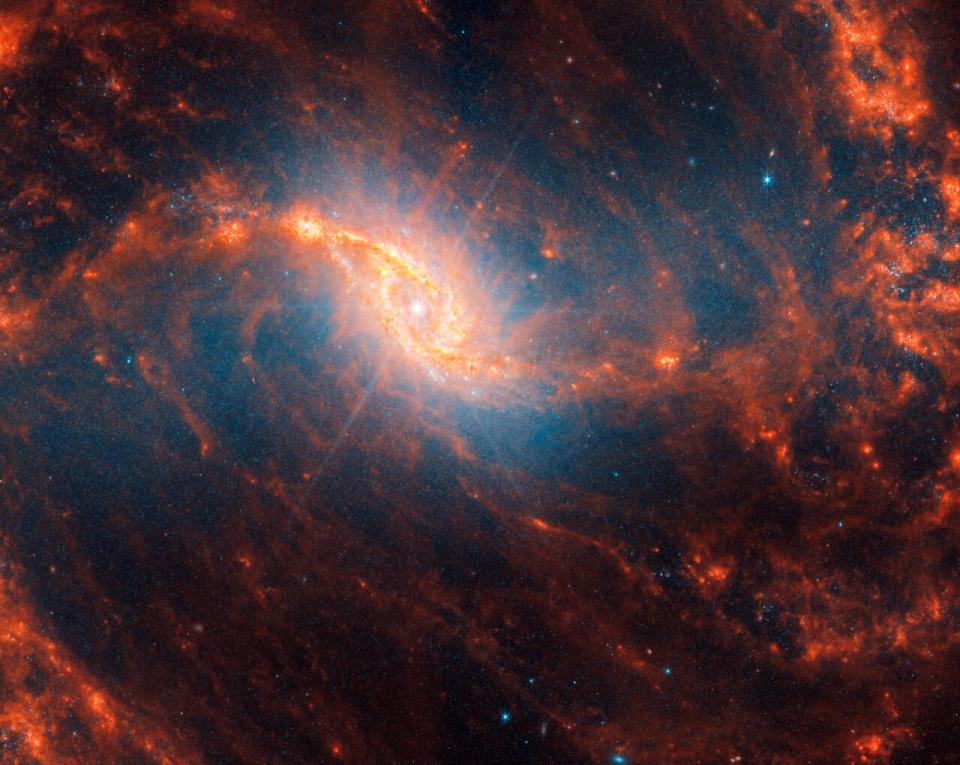

One thing that seems to be apparent from these 19 spiral galaxy images is that galaxies appear to grow from the inside out, meaning the birth of stars starts at the hearts of galaxies then radiates outwards through those spiral arms.
This means that the further from a galaxy’s core a star is the more likely it is to be relatively young with ancient stars mostly gathered at the hearts of galaxies.
RELATED STORIES
— James Webb Space Telescope snaps stunning view of supernova’s expanding remains (photos)
— ‘Weird’ game of cosmic tug-of-war in the Tarantula Nebula weaves up new stars
— Early galaxies were shaped like surfboards and pool noodles, James Webb Space Telescope finds
“I feel like our team lives in a constant state of being overwhelmed —in a positive way — by the amount of detail in these images,” homas Williams, a postdoctoral researcher at the University of Oxford, said in the statement.
The full catalog of new JWST spiral galaxy images is available here.

Dr. Sarah Adams is a scientist and science communicator who makes complex topics accessible to all. Her articles explore breakthroughs in various scientific disciplines, from space exploration to cutting-edge research.

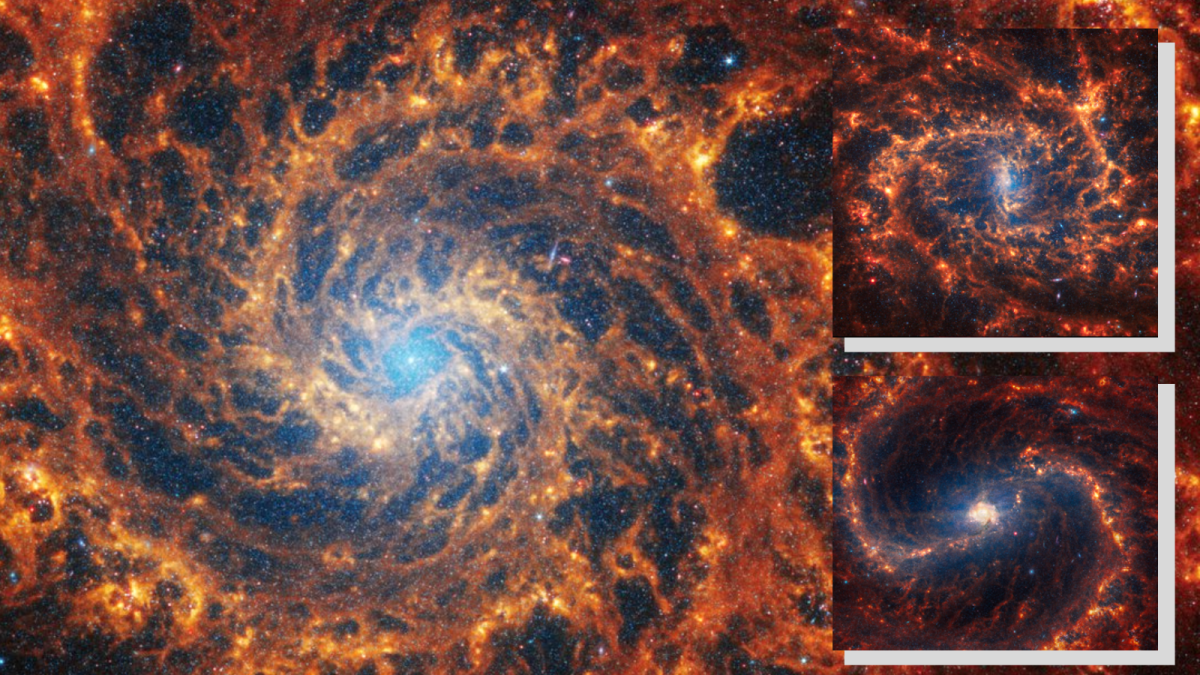





/cdn.vox-cdn.com/uploads/chorus_asset/file/25453360/DSCF7202_Enhanced_NR_3.jpg)
